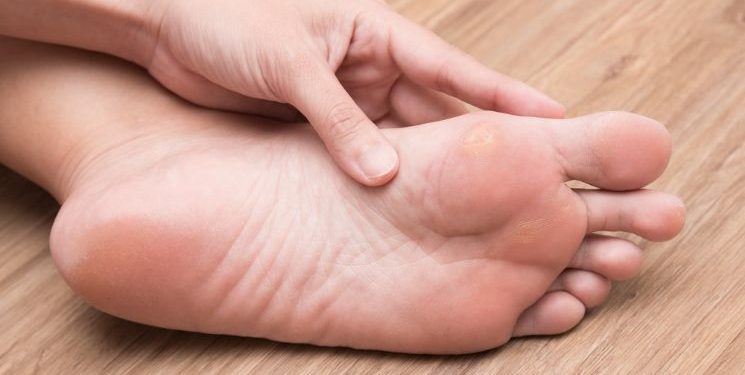Corns and calluses are thick, hardened layers of skin that form on the feet or hands to protect them from friction and pressure. They’re usually harmless, but they can become uncomfortable and look unsightly.
They can develop for a variety of reasons, most often from repetitive irritation and repeated contact with objects that make the skin dry and flaky. Some medical conditions also may cause them to appear, including diabetes and circulation problems.
The best way to prevent corns is to remove the source of the problem, such as wearing shoes that fit properly or wearing gloves. Then the skin will gradually heal and the calluses will disappear on their own.
A common cause of corns is wearing shoes that are too tight and narrow or have a seam that constantly rubs against the foot. You can also get them from wearing socks that are too large and have seams that repeatedly rub against the same spots on your foot.
Other causes of corns are previous surgery or trauma to the feet that changes the normal alignment of the bones. Those with arthritis, bunions or bone spurs are more likely to develop corns.
Your doctor can identify the cause of your callus or corn and treat it with medication to reduce its symptoms, if necessary. This will also help prevent them from returning.
Medicated creams and lotions can be used to soften the skin and prevent them from growing back. These should be applied daily to the affected area.

It’s important to use a moisturizer that contains salicylic acid, ammonium lactate or urea for gradual softening of the corns and calluses. You can find these products in most drugstores.
Gently filing the callus or corn with a pumice stone is another method of removing the dead skin. Dip the stone in warm water and gently file the corn or callus with a circular or sideways motion, avoiding too much skin removal.
Moisten the area with warm water after removing the dead skin and apply a moisturizing cream or lotion. Repeat this every day until the corn or callus is gone.
You can also try applying a non-medicated donut pad or piece of moleskin around the callus or corn, which will cushion it from the pressure of the shoe and help prevent it from rubbing against the shoes. This is especially helpful if you have a corn between your toes or on the sides of your feet.
If the area where the corn or callus is is very painful, you can have your doctor trim it with a small blade to relieve the pain. Be careful not to cut off too much of the hard, thickened skin, as this can lead to bleeding or infection.
Treatment for corns and calluses typically includes modification of activities or footwear, and sometimes surgery to correct underlying structural problems that are causing them to develop. Ultimately, the goal is to eliminate or minimize the problem entirely so that they won’t return.









